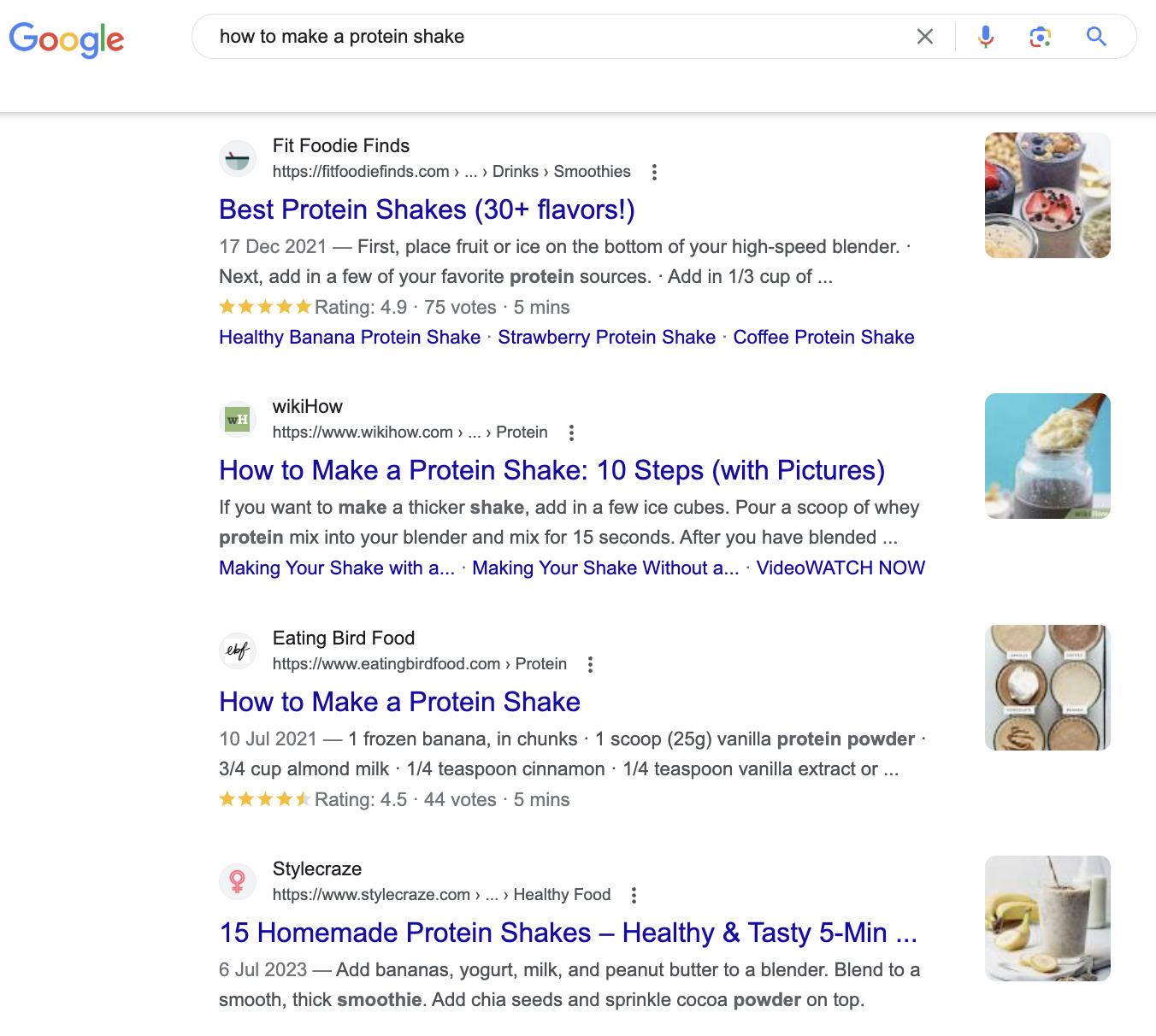Best SEO Practices 2024
As SEO continues to evolve, it’s essential to stay on top of the latest best practices. In 2024, success comes from not just following technical guidelines but also creating content that resonates with users while meeting SEO standards.
1. Match Your Content with Search Intent
Understanding the reason behind a search query is very crucial. Search intent could be of 4 types: informational, navigational, transactional, or commercial. Align your content with what users are looking for to increase the chances of ranking . Pay attention to the search engine results pages (SERPs) to figure out the intent behind specific keywords and align your content accordingly.

2. Create Click-Worthy Title Tags and Meta Descriptions
Your title tags and meta descriptions may not directly impact rankings, but they significantly influence click-through rates (CTR). Write titles that are descriptive, engaging, and relevant to the query. Similarly, meta descriptions should be concise and summarise what the page talks about , compelling users to click through.
3. Improve Your Site’s User Experience
User experience (UX) is a key factor in SEO. Google prioritises websites that are easy to navigate, load quickly, and function seamlessly on all devices. Focus on elements like mobile responsiveness, site speed, and clear navigation to keep users engaged and decrease bounce rates.
4. Target Topics with Search Traffic Potential
To grow your organic traffic, one should target topics that have actual search demand. Use tools like Google Keyword Planner or Ahrefs to find keywords with good traffic potential.
5. Use Your Target Keyword in Three Places
Strategic placement of your main keyword is vital. For optimal SEO results, include your target keyword in:
A. Title Tag
Ensure the keyword is part of the title tag. This signals to search engines what the page is about.

B. Heading (H1)
Your H1 should contain the primary keyword to reinforce the page’s relevance to the topic.
C. URL
Short, keyword-rich URLs are easier for search engines to read and provide clarity to users about the content.
6. Use a Short and Descriptive URL
URLs should be clear, concise, and descriptive. Avoid long URLs with unnecessary words or characters. A short, keyword-rich URL improves both user experience and SEO, making it easier for search engines to index your page.
7. Optimise Images for SEO to Get Additional Traffic
Image optimization is often overlooked, but it’s an essential part of SEO. Compress your images to improve site speed, use descriptive file names, and always add alt text to provide context to search engines. This can also improve visibility in image search, driving more traffic to your site.
8. Add Internal Links from Other Relevant Pages
Internal linking helps users navigate your site and helps search engines understand your content structure. Link relevant pages to one another to distribute page authority, encourage visitors to explore your site further, and increase time on site—all of which are positive SEO signals.
9. Cover Everything Searchers Want to Know
When creating content, ensure that you address every question or subtopic users may have.
A. Look for Common Subtopics on the Top-Ranking Pages
Top-ranking pages often contain several subtopics that resonate with users. Take note of these to ensure your content is comprehensive.
B. Run a Content Gap Analysis
By comparing your content with top-ranking competitors, you can identify missing information or topics that could enhance your article’s completeness.
10. Get More Backlinks to Build Authority
Backlinks are a powerful ranking factor in 2024. Earning high-quality, authoritative links from reputed sites .This signals to search engines that your content is valuable and trustworthy. Focus on building relationships with other websites and creating content that’s worthy of being linked to.
11. Get Good Scores to Pass Core Web Vitals
Google’s Core Web Vitals are key metrics that measure a site’s loading performance, interactivity, and visual stability. Optimising your site to pass LCP,CLS and INP. These tests will not only improve your ranking but also enhance user experience, which is critical for SEO success in 2024.
12. Use HTTPS to Secure Your Site
Security is non-negotiable. If your site doesn’t yet use HTTPS, it’s time to upgrade. Google favours secure websites, and users trust them more too. HTTPS is a ranking signal and protects sensitive information, improving the overall integrity of your website.
Next Steps
As SEO trends shift, the basics remain vital. Keep these best practices in mind as you update your strategies for 2024. Stay flexible, monitor changes in search algorithms, and prioritise user experience to maintain and improve your rankings.